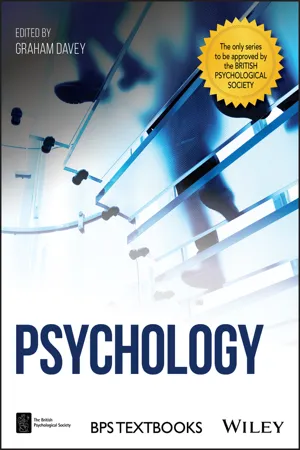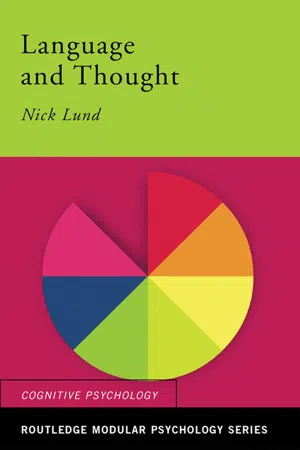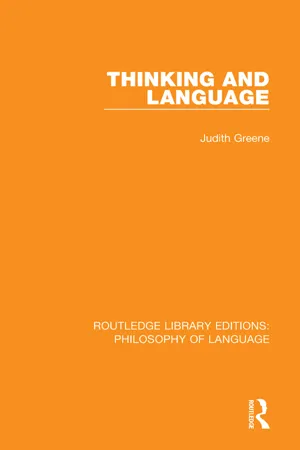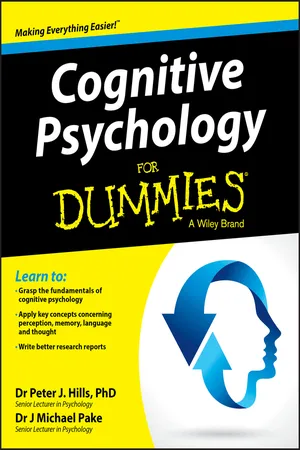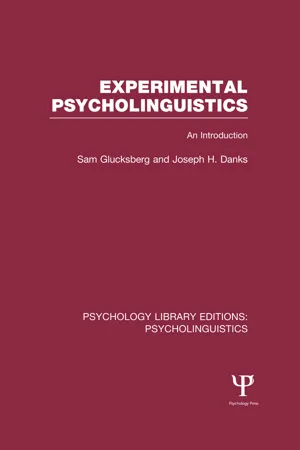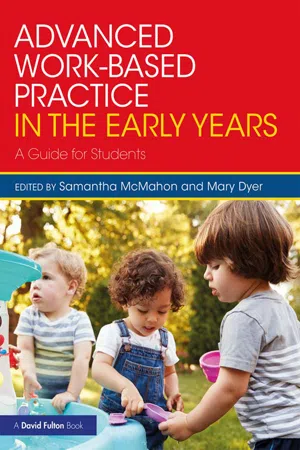Psychology
Language, Thought and Communication
Language, thought, and communication are interconnected in psychology, with language serving as a tool for expressing thoughts and facilitating communication. The relationship between language and thought is a topic of interest, as it influences cognitive processes and perception. Communication involves the exchange of information through verbal and nonverbal means, impacting social interactions and relationships.
Written by Perlego with AI-assistance
Related key terms
Related key terms
1 of 4
Related key terms
1 of 3
7 Key excerpts on "Language, Thought and Communication"
- eBook - ePub
- Ronald Comer, Nancy Ogden, Michael Boyes, Elizabeth Gould(Authors)
- 2017(Publication Date)
- Wiley(Publisher)
Using your cellphone and GPS requires language skills as well as some key thinking skills. You have to make several key decisions and likely solve some problems when using technologies like cellphones, especially if you are moving around and playing Pokémon Go at the same time (Serino et al., 2016; Althoff, White, & Horvitz, 2016). The need to plan is true of GPS systems as well. For example, it is good to find out how to turn off the “use unpaved roads” setting on your GPS before letting it guide you around in Canada (especially in winter).Language and thought are characteristics that distinguish humans from other creatures. Language enables us to communicate in a precise and often creative way. We also use language to tell stories or jokes. Language has allowed us, as a species, to learn from past generations, originally by oral storytelling and then by written language. Language is a critical component of human behaviour because it greatly facilitates progressive social interactions. Consider the difficulty involved in organizing a large group of people to build a city. Such a feat would be nearly impossible without the use of language.Although language is communicative, sometimes we use language only in our own heads. We often think using words, but many of our thoughts are not shared. Some people write extensively but only for themselves, never intending or wanting others to read their written words. Although the processes of language and thought overlap, a clear difference exists between them. In general, psychologists study these processes separately.Human thought is highly complex, varies from individual to individual, and takes on many different forms. The study of thought is a major component of cognitive psychology. As we saw in Chapter 1 , the word cognition - eBook - ePub
- Graham C. Davey, Graham C. Davey(Authors)
- 2018(Publication Date)
- Wiley(Publisher)
So, what does the riddle tell us about language and thinking? A broad conclusion, but one that is only partly misleading, is that language is easy and thinking is hard. When we speak or read a language that we have learned in childhood, it comes naturally to us. Thinking, on the other hand, is often difficult. As the surgeon riddle shows, it can be compromised by preconceptions. And, when we engage in conscious trains of thought, we often experience the cognitive effort of thinking about complex matters in a way that we don’t experience when using language.In this chapter, we will look at language and thinking separately, as there are different traditions in cognitive psychology, which is the discipline in which language and thinking are studied. At the end, we will ask how they are related, since thoughts are often expressed in language and, at least for many people, language is the main medium for thinking.SECTION SUMMARY
- Language and thinking pervade human life.
- Language is easy to use; thinking can be hard.
- Language and thinking are usually studied separately in psychology – a division followed in this chapter.
LANGUAGE
LEARNING OBJECTIVE 12.2
Describe the evolution and structure of language as a communication tool, how language is acquired by children and used by adults (including bilingual adults), and the role of the brain in language use.
LanguageHuman and animal communication - eBook - ePub
- Nick Lund(Author)
- 2014(Publication Date)
- Routledge(Publisher)
2 The relationship between language and thought DOI: 10.4324/9780203695012-2 Introduction The linguistic relativity hypothesis Thought determines language The interdependence of language and thought Summary Review exerciseIntroduction
One feature that sets human communities apart from animal communities is the use of language. Language is a vital part of every human culture and is a powerful social tool that we master at an early age. A second feature of humans is our ability to solve complex and/or abstract problems. Although some animals are capable of solving simple problems none are capable of solving the problems involved in something like space exploration or even in the designing of a psychology experiment. For centuries philosophers have questioned whether these two abilities are related and, if so, what the nature of the relationship between language and thought is. At the beginning of the last century psychologists joined this debate and it is a topic that is currently generating a lot of research.Another factor in the study of language and thought is the role of culture. When we study a language from another country we realise that it is not just the words and grammar that are different but the customs and traditions as well. Even the ideas of that culture and the way of dealing with life can be different. If people speaking different languages have different customs and ideas it raises the following question: do different languages lead to different ways of thinking?Although there is some debate about the extent of language in thinking (see, for example, Carruthers, 1996 - eBook - ePub
- Judith Greene(Author)
- 2016(Publication Date)
- Routledge(Publisher)
5Thinking and language: some problemsThe aim of this chapter is to bridge the gap between the first part of the book on thinking and the second part on language. It must have become increasingly obvious that to talk about thinking while ignoring language is an extremely lopsided affair. Verbal labels are not only of crucial importance in concept attainment experiments but are the chief medium of all types of thinking. Task instructions are couched in verbal form, hypotheses are expressed verbally and subjects’ talking aloud is considered to give at least some indication of their thought processes. Is it any wonder that the issue of whether language is necessary for thinking has proved an endlessly fascinating topic?The interaction between thought and language has been given its most illuminating analysis by the great Russian psychologist Vygotsky, whose book Thought and Language, first published in 1934, has been translated into English (1962). Vygostky’s view is that language has two distinct functions: external communication with one’s fellow human begins and, equally important, the internal manipulation of one’s inner thoughts. The miracle of human cognition is that both these systems use the same linguistic code and so can be translated – with more or less success – one into the other.That this is by no means necessary can be demonstrated by looking at animals. There is no doubt that animals can ‘think’ in the sense of solving complicted discrimination problems, even succeeding in learning oddity problems by picking out the odd stimulus out of three, a problem which presumably entails some quite complicated ‘inner representation’. Equally, there is no doubt that animals have extensive systems of communication: vocal cries, visual signals, smells, and so on. But what no animal has so far been able to do is to walk out of a psychological experiment and tell the next monkey in line, ‘There’s a mad professor in there who will give you a banana if you choose the odd one out.’ In other words, the monkey is not able to translate whatever processes he uses for internally representing a problem into a form that he can communicate externally. I say so far because of the remarkable recent work on teaching sign languages to chimpanzees which will be briefly described in section 5 - eBook - ePub
- Peter J. Hills, Michael Pake(Authors)
- 2016(Publication Date)
- For Dummies(Publisher)
In this chapter, we discuss the links between language and thought, including the most famous theory in this field (the Sapir–Whorf hypothesis) and the extensive evidence that supports it. We also look at the equally extensive evidence contrary to this theory. Throughout, we try and form a coherent response to the question: does thought require language?Investigating the Idea that You Need Language to Think
Much evidence suggests that language affects thinking in profound ways. In this section, we back up this assertion of an intimate and essential link between language and thought. We look at language differences, colour perception and how children think, among other aspects.Connecting language to thought
Russian psychologist Lev Vygotsky believed that language and thought are intertwined and that during childhood development this relationship changes. Early on, thought and language are unrelated, but as children get older, language and thought become loosely related, with a behaviour preceding a verbal description. Subsequently, speaking out becomes internal speech, which allows people to create complex thoughts.The main proponent of the idea that people require language in order to think and that language dictates how they think was American linguist Benjamin Whorf (don’t confuse with Mr Worf, the Star Trek character!).His hypothesis is usually known as the Sapir–Whorf hypothesis (or linguistic relativity ). The idea is that the structure of someone’s language dictates how that person sees the world – how he devises concepts and categories, and memorises and thinks about his surroundings.Psychologists talk in terms of strong and weak views of the Sapir–Whorf hypothesis:- Strong view: Language must affect thought in all cases. In fact, you can’t have any kind of thought without language. Certain concepts that are expressible in one language can never be described in another language and a large number of untranslatable sentences are bound to exist: presenting the issue of translatability. Little evidence has been produced for the strong view.
- Weak view: Language influences thought. Plenty of evidence supports this form of linguistic relativity (that is, language causes differences in mental processes). The form of people’s language affects how they think (called linguistic determinism
- eBook - ePub
Experimental Psycholinguistics (PLE: Psycholinguistics)
An Introduction
- Sam Glucksberg, Joseph H. Danks(Authors)
- 2013(Publication Date)
- Psychology Press(Publisher)
These results, like those obtained from Koler’s (1966a) repeated-word memory task and the Stroop color-word task, suggest very strongly that a single conceptual system is common to both languages. The job of a translator is to decode the input in one language, then encode it in another. Simultaneous or running translation can be accomplished rapidly. Surprisingly, the speed of translation is virtually unaffected by the degree of bilin-gualism (Lambert, Havelka, & Gardner, 1959). What is important is the complexity of the material being translated (Treisman, 1965). The greater the information load, the greater is the lag between input and output. This is not at all surprising because complex ideas take longer to put into words and also take longer to understand whether we are monolingual or bilingual.Summarizing the results from the study of bilinguals, there is little support for linguistic relativity. What about linguistic determinism—the notion that language in general influences thought? Symbolic Representation: How We Know the World Language and Cognitive DevelopmentWithin the mainstreams of American and Russian psychology it generally has been assumed that language and conceptual development are inextricably related. Watson’s (1913) proposal that thought is speech was foreshadowed by Sechenov’s (1863) statement that thought, in children at least, is mediated by speech or whispers. Sechenov’s student, Pavlov, considered speech to be the mechanism which makes higher mental functioning possible in humans: “It is nothing other than words which has made us human” (Pavlov, 1941, p. 179). This general viewpoint has continued to this day among the Russians. Following in the tradition of Vygotsky (1920s, 1962 English translation), Luria (1961) views the development of speech as the critical factor in the development of voluntary control of behavior and of higher mental functioning: “[speech is central to] . . . the process in which functions previously shared between two persons gradually change into the complicated functional systems in the mind which forms the essence of human higher mental activity - eBook - ePub
Advanced Work-based Practice in the Early Years
A Guide for Students
- Samantha McMahon, Mary Dyer(Authors)
- 2018(Publication Date)
- Routledge(Publisher)
It is estimated that 10% of children have some form of speech, language and communication need (Communication Trust, 2011). Their difficulties fall into two categories of need, described as ‘persistent’ and ‘transient’. A child with a persistent SLCN may have a physical impairment or long term learning difficulty, such as a speech or hearing impairment or a specific learning difficulty that includes language/understanding delay. These children will require the specialist support of health and education professionals. A child with a transient SLCN may have a short term difficulty such as a temporary loss of hearing, or ‘impoverished’ speech characterised by a lack of vocabulary, difficulty in understanding language, poor listening and attention skills or poor articulation. These children may also need specialist professional support, but it is likely that their need is temporary. With early identification and appropriate intervention, children with transient difficulties can be supported to catch up with their peers and reach their developmental milestones. Unfortunately, it is the children from poorer backgrounds who are more likely to experience transient SLCN. Given the critical impact of communication and language on future achievement and mental well-being, it is essential that you act as champions in promoting communication and language in your own practice and beyond. A good starting point is for you to consider the meaning of the three words; speech, language and communication:- Speech involves using our voices to make sounds for talking. We use intonation, clear articulation and fluency to ensure the sounds we make are understood by others. An example of a child starting to use speech is early babbling or saying a consonant sound for a common word e.g. C for ‘cup’.
- Language is a complex system of communication using a combination of words to express meaning. It involves following rules for structure and style. Children develop receptive language (understanding) before expressive language (speaking). An example of a child starting to use language is ‘my go park’.
- Communication is how we share information through different means e.g. speaking, signing, writing, movement. It involves interacting with others, using verbal and non-verbal cues and following conversation rules. An example of a baby using communication is waving goodbye or pointing to an object and uttering a sound.
THINKING ACTIVITY Communication and language skills support four specific areas of life:- Learning
- Behaviour
- Social development
- Emotional development.
Learning
Learning is an interactive process that involves the use of language, since it involves listening, asking questions, discussing and using language for thinking. For children, being able to articulate their thoughts and explore them with others enables them to extend their learning and opens up new possibilities. Language is also a prerequisite for literacy. Being able to read can open up access to an abundance of information, literature and knowledge and being able to write enables us to record and share new ideas, concepts and knowledge. When you consider how you support or teach young children, you realise that learning is very reliant on speech, language and communication in its many different forms.
Index pages curate the most relevant extracts from our library of academic textbooks. They’ve been created using an in-house natural language model (NLM), each adding context and meaning to key research topics.
Explore more topic indexes
Explore more topic indexes
1 of 6
Explore more topic indexes
1 of 4

